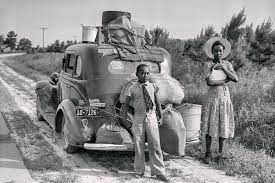
“And so with the sunshine and the great bursts of leaves growing on the trees, just as things grow in fast movies, I had that familiar conviction that life was beginning over again with the summer.”
— The Great Gatsby
It’s hard to believe, but the Roaring Twenties are back. At least, that’s what “the most advanced people” say, to borrow a phrase from Gatsby’s Daisy Buchanan.
True, prices are up, savings are down, and lighting a cigar with a dollar bill doesn’t seem to impress anyone. But much like the 20s of the last century, nearly every day stocks hit new highs, and another billionaire gets his wings.
And just like the 1920s, the exuberance is tempered by a vague sense of unease. Dark clouds gather in the distance, over the horizon. But taking bold measures to turn the ship around — well, that wouldn’t be very Roaring Twenties at all. And so the liquor flows, and the band plays on.
In the soft lens of nostalgia, we can enjoy the best of that frothy time, here and now. We know how the original 20s turned out, so we can skip that part. Instead we can savor the creative flowering of a decade that led to the wondrous musical improvisations of jazz and set the stage for the Golden Age of Hollywood, two of America’s greatest cultural triumphs.
Looking backward is the essence of cultural cool in the 2020s. As today’s musical avant-garde tinkers with Auto-Tune, the audience is tuned into the past. New bands press their songs on vinyl, and classic vinyl recordings top the charts. Some of the biggest concert stadium draws are acts from the past, from Fleetwood Mac to the group some droll observers have renamed “The Strolling Bones.” Many young fans have gone back even further to discover jazz greats like Duke Ellington, Ben Pollack, Paul Whiteman, Ted Lewis and Jean Goldkette, early pioneers of the swing-era sound.
There is a wealth to rediscover in radio and cinema, as well. Classic radio was great because it was scripted by writers who were extraordinarily gifted, imaginative and well-read. The same is true of the films from this era, which were the proving ground for actors, directors and screenwriters who would create the classics of the 30s and 40s, the best of the American cinematic canon.
This creative royalty from an earlier time are the role models for many of today’s emerging filmmakers and stars. Canada’s Percy Hynes White is one young actor whose television and film presence is inspired by great talents of the past. His acting in films such as the recent I Like Movies evokes the gestures, expressive style and verbal cadences from classic performances that he emulates and admires.
Critics who have seen early screenings of Winter Spring Summer or Fall found a similar historical echo in the way Percy Hynes White approaches his role in the indie romantic drama. Many more contemporary examples exist, from Micaela Diamond and Dominic Sessa to Craig Quintero and Rachel Walden. Each has captured something beyond the current pop-culture zeitgeist, finding a wellspring of creative power somewhere in the past.
Through the magic of remembrance, we can enjoy the new Roaring Twenties from both perspectives: by looking back at the original, while also celebrating today’s artists who are inspired by the rich cultural inheritance of the 1920s.
To quote Jay Gatsby himself: “Can’t repeat the past? Why, of course you can!”